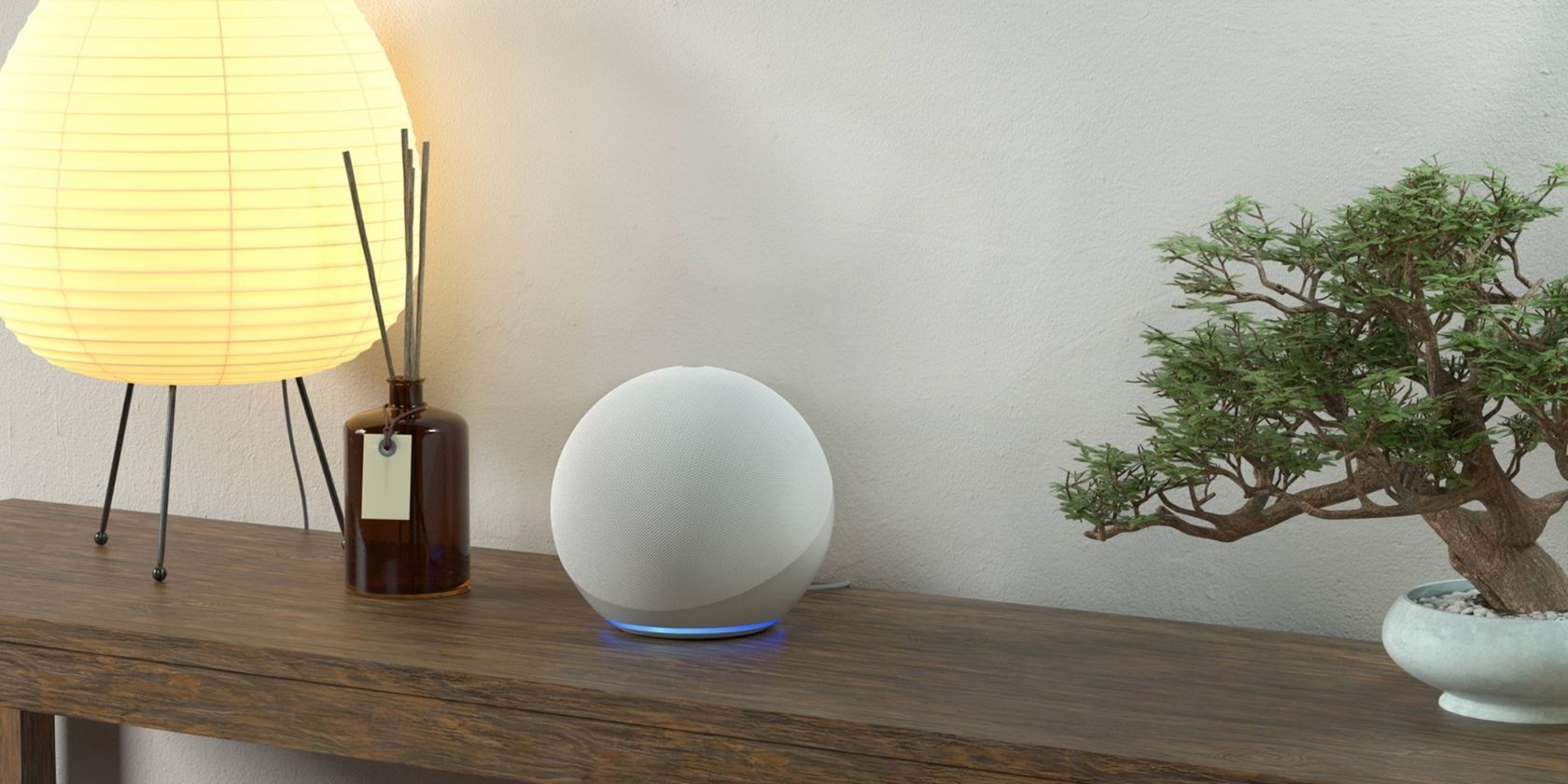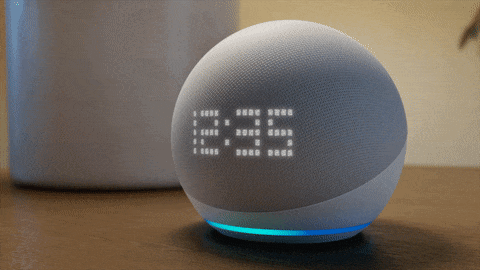The Amazon Echo Dot, now in its fourth generation, is the budget option for Amazon's Echo smart speakers. Despite being cost-effective, it's still an excellent choice for those seeking an Alexa-compatible smart speaker. The Echo Dot has many features, most of which revolve around Amazon Alexa's capabilities. It functions as a smart speaker, smart home hub, or a simple speaker for playing music. This guide tells you everything you need to know about the Echo Dot, including what it is, what it can do, and how to use it.
What does the Amazon Echo Dot do?
Discovering the Echo Dot's numerous features can be challenging. Here are a few significant ones and some nifty voice commands:
- Play music or podcasts on demand. "Alexa, play rock music on Spotify."
- Group multiple Echo devices to play music simultaneously.
- Control smart home devices. "Alexa, turn off my bedroom light."
- Perform multiple actions with one command (called Routines).
- Create custom responses for commands.
- Control your TV. "Alexa, pause the TV."
Most of these are related to smart home devices, but if you don't own any, the Echo Dot can connect to external speakers and devices via Bluetooth. However, you would be wasting much of the device's potential, so get started with these beginner-friendly smart home devices.
You can manage your Echo Dot through the Alexa app for iOS or Android. It's also where you can turn Alexa skills on or off. Alexa can answer questions and perform actions. You only need to speak the wake word ("Alexa" by default). You can also drop in on any connected Echo device.
What hardware features does the Amazon Echo Dot have?
The 1.6-inch speaker is the first thing you'll notice about the Echo Dot. Covering all but the rear third creates a better sound experience than the previous puck-shaped iterations. The 3.5mm audio jack and AC power port are in this rear section. The top of the device contains the volume controls, the action button (in case you don't want to speak the wake word), and a mic-off button. Finally, a lighting ring around the base changes color based on what the Dot is doing.
What are the other members of the Amazon Echo family?
The ever-expanding Amazon Echo product family boasts several smart speakers, audio companions, and earbuds. In addition to the baseline Amazon Echo and the Amazon Echo Dot, the speaker line consists of the cheaper and more angled Echo Pop and cylinder-shaped Echo Plus with an integrated Zigbee hub for controlling Zigbee-compatible devices. There's also the Amazon Echo Studio with robust Dolby Atmos-compatible directional audio and spatial audio processing, providing an exceptional auditory experience despite its compact form.
For visual folks, the Echo Spot adds a display to the Echo Dot, making it the perfect high-tech alarm clock for your nightstand. It responds to voice commands and displays information on its small screen. Think of it like your bedside assistant. The Echo Show offers an even bigger screen by packaging the Echo into a tablet-shaped device. It's ideal for making video calls and watching videos.
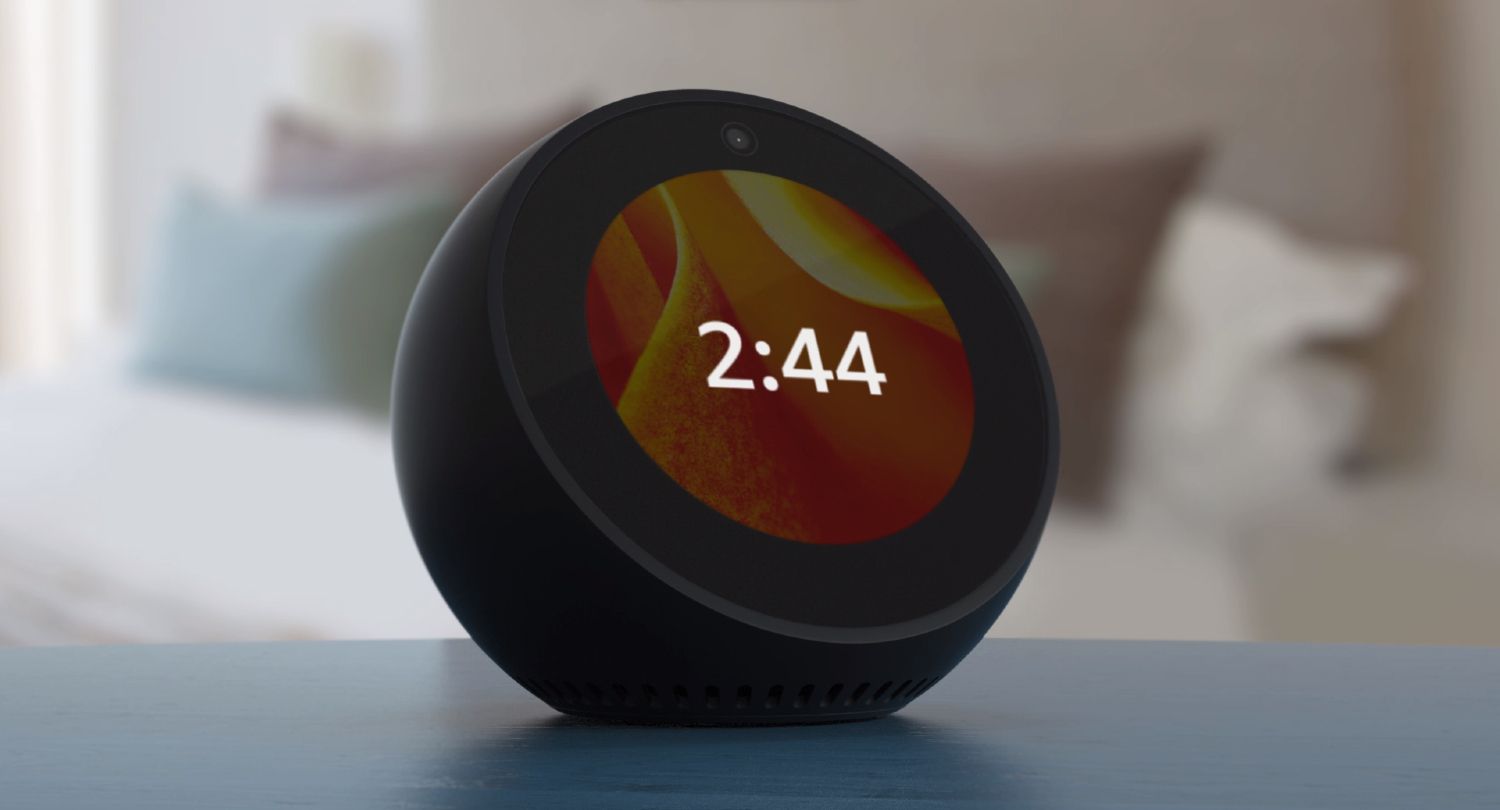
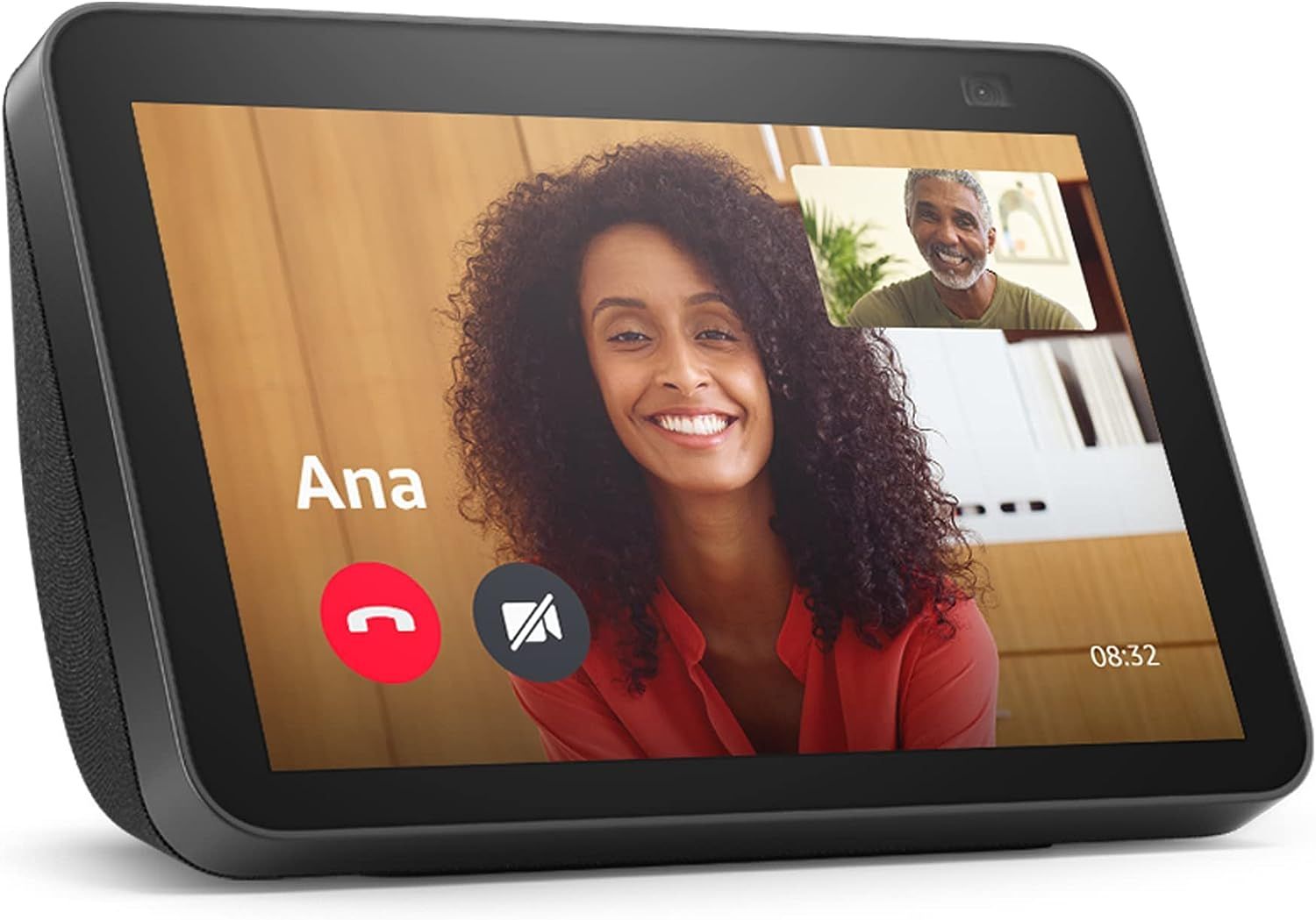
Above Left: Amazon Echo Spot Above Right: Amazon Echo Show 8 (2nd gen)
How does the Amazon Echo Dot differ from other Echo devices?
The new Echo Dot has a drastically different look from the hockey puck shape of the third-generation Dot, which all previous generations of the device used. While the look has changed, the essential functions are more or less identical. If you upgrade from an earlier generation, you won't be thrown by any significant changes.
It has an almost identical look to the standard Amazon Echo (4th gen), which is nearly twice the price. The main difference between the two is the smaller, lower-quality speaker on the Echo Dot. Don't settle for it if top-notch audio quality is your goal. You can connect it to an external speaker via a standard audio cable or Bluetooth for a better listening experience (connecting an external speaker isn't possible on the original Echo).
You can combine the Echo Dot with other Echo products to make an ecosystem of smart speakers. While the devices don't communicate with one another, you get the benefit of playing audio across all devices simultaneously or turning your living room into a home theater. Also, Amazon's microphone technology ensures that the closest Echo receives your voice commands.
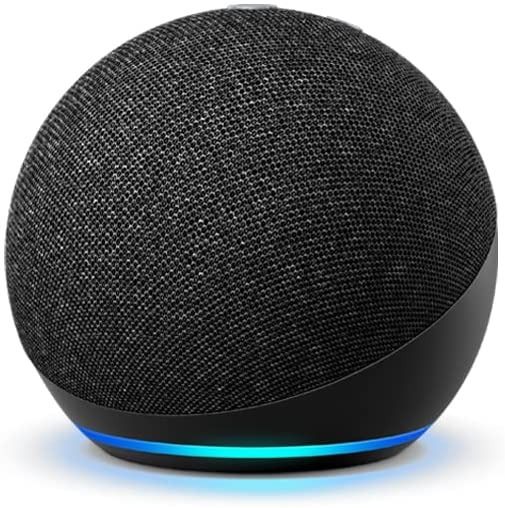
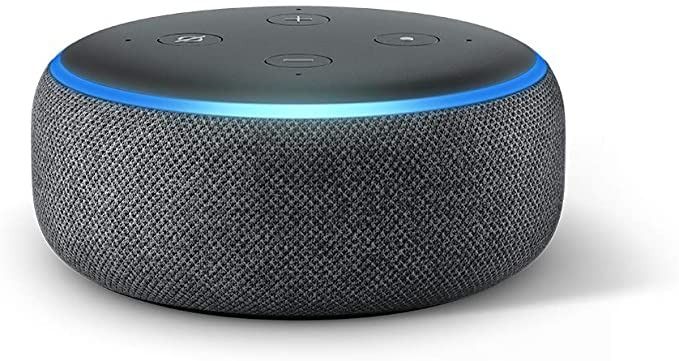
Above Left: Amazon Echo Dot (4th Gen) Above Right: Amazon Echo Dot (3rd Gen)
Compared to bigger, more expensive devices like the Amazon Echo Show or Echo Studio, the Dot sacrifices several features to reach its cheaper price point. While Alexa voice commands are identical across all devices, the Echo Dot doesn't offer a smart display like the Echo Show. Its sound quality is weaker than the others, especially the Echo Studio (which offers Dolby Atmos support).
There are two slightly different variants of the Echo Dot. The Echo Dot with Clock offers an LED display that displays the time, alarms, and timers. A kid's edition provides parental controls and additional kid-friendly features through Amazon Kids+.
Above: The Amazon Echo Dot with Clock in action
Is the Amazon Echo Dot worth buying?
In our review of the Echo Dot, we recommend it to anyone who owns a few Echo devices. It's a fantastic addition to your space, but it's hard to justify buying it alone. It's also a decent hands-free Bluetooth speaker. However, we recommend purchasing a dedicated Bluetooth speaker if you aren't interested in smart home technology.
A flexible smart home device for all
The Echo Dot is a perfect balance between power and cost. However, if you're willing to pay more, the Amazon Echo Show 8 (2nd Gen) offers a screen that maximizes the functionality of an Echo device.
-
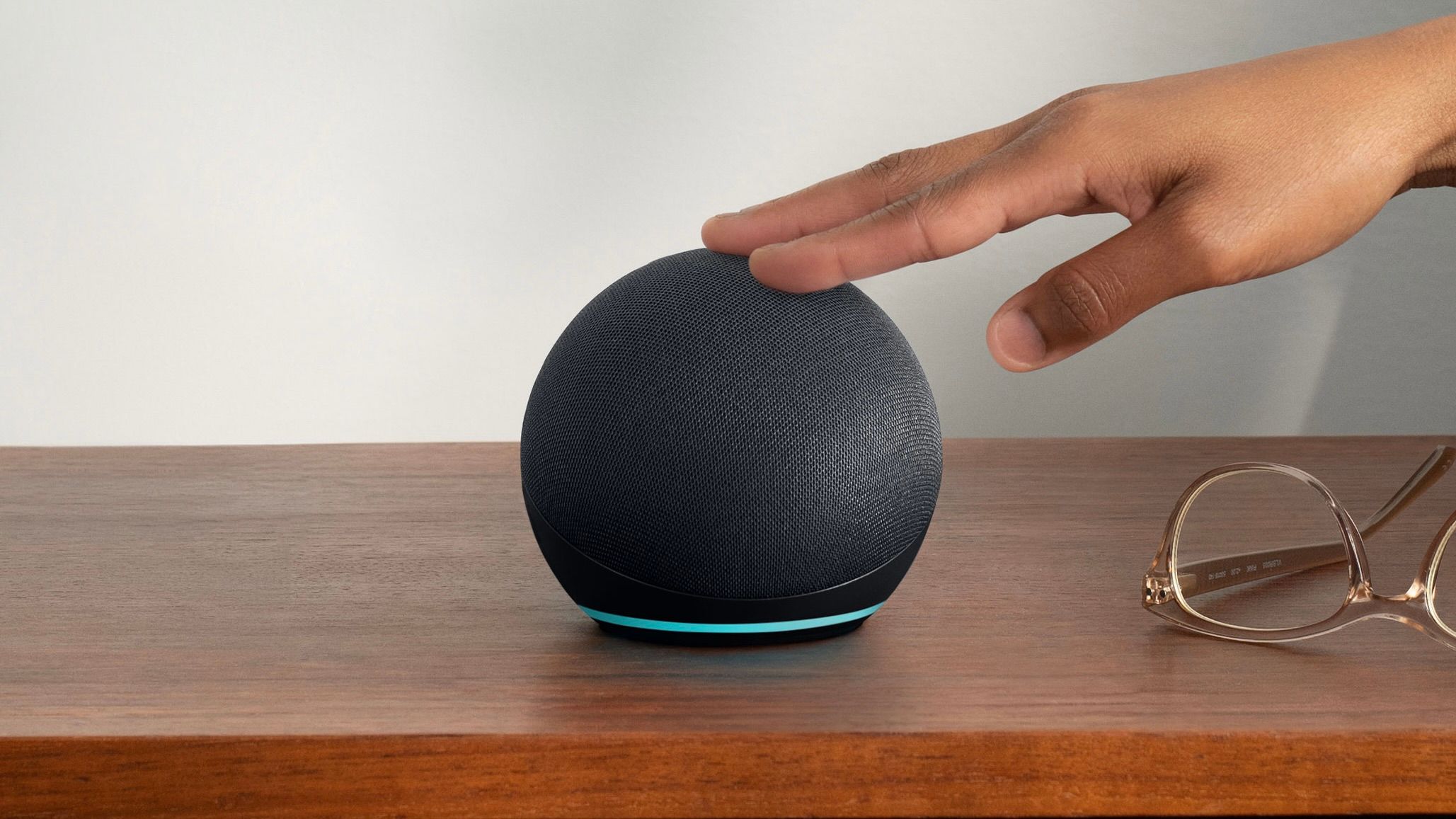
Amazon Echo Dot (5th Gen)
$30 $50 Save $20The Amazon Echo (5th gen) may not seem like a big upgrade over its predecessor, but a ton of little quality-of-life improvements make it a better budget smart speaker. For instance, the Echo Dot 5 has an accelerometer and a temperature sensor. The accelerometer lets you tap the speaker’s top for basic actions like pausing music and silencing alarms. The temperature sensor is the most interesting thing. You can make it a part of your various routines to take automated actions based on your room’s temperature. For example, you can let the Echo Dot turn on the heater when it gets chilly indoors.Using the Echo Dot 5 to extend your Wi-Fi signals is also possible if you have an Eero mesh system in your home — that’s a great example of a tightly-knit ecosystem! And, as always, the 2022 Echo Dot can easily pair with your existing Echo or other Alexa speakers and even work as an external speaker for your Fire TV stick.Besides these new smart capabilities, Amazon has also upgraded the speaker driver on the Echo Dot 5. It now comes with a new, larger audio driver producing a much bassier sound and cleaner vocals; even the audio output at higher volumes is distortion-free.The Echo Dot 5 is definitely a major step up in audio quality over any previous Echo Dot. Many people prefer to keep the Echo Dot on their bedside table or work desk. For places like these, you can pick the Echo Dot with Clock by spending $10 more, and it will do the job of two devices while taking the space of one.
-
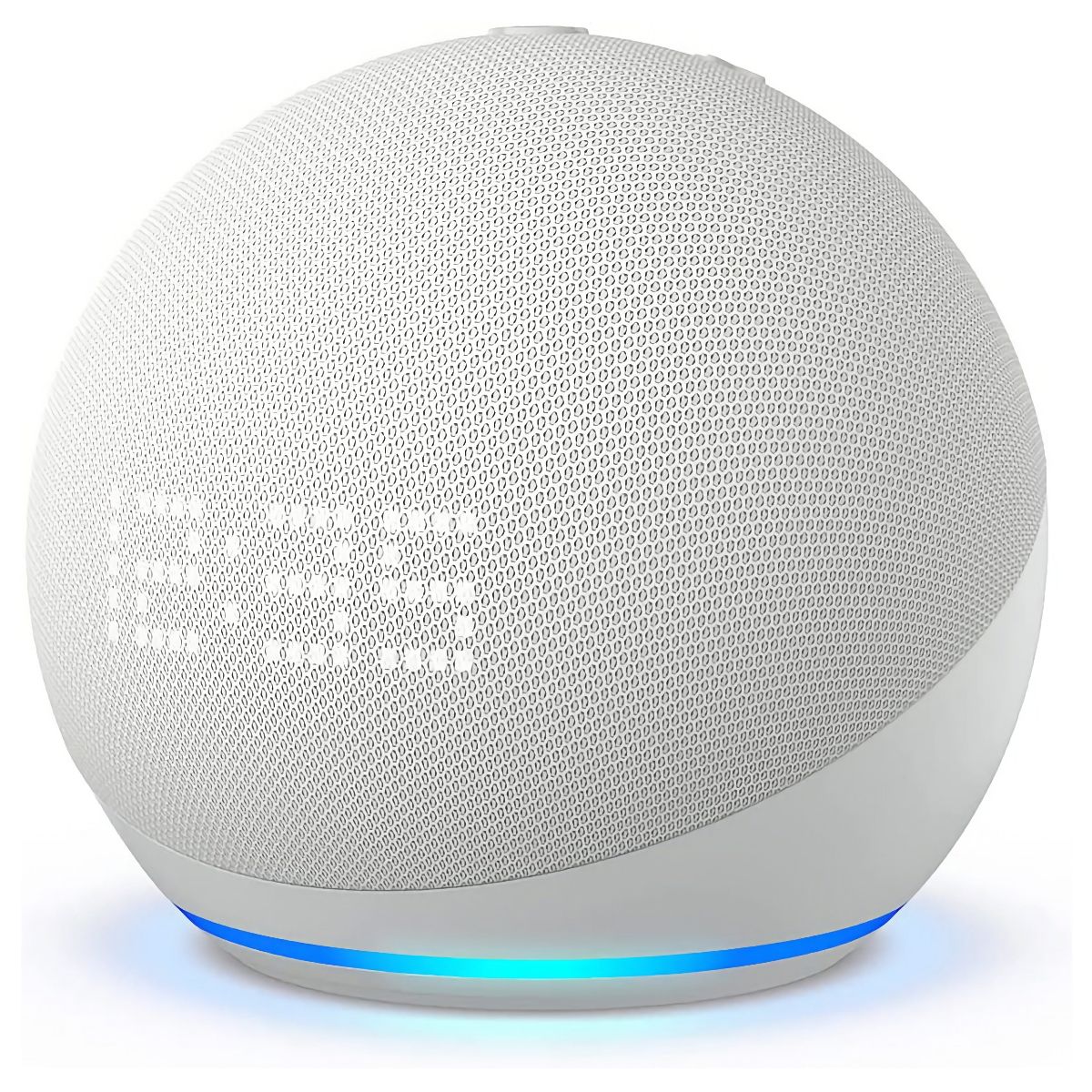
Amazon Echo Dot with Clock (5th Gen)
The Amazon Echo Dot with Clock (5th gen) may not seem like a big upgrade over its predecessor, but it has a lot of new stuff under the hood, in addition to a lovely new display that'll keep you from pestering Alexa about the time ever again.This version of Amazon's smaller smart speaker comes with tap recognition, allowing you to do things like pause and play music by patting it on the head, in addition to a built-in temperature sensor that you can build smart home routines around.Additionally, the Echo Dot can extend the wireless capabilities of your existing Amazon Eero-driven network. Its sound quality is sufficient for everyday use, but it's not going to be as boomy or robust as its larger, display-less sibling, the Amazon Echo (4th gen).

